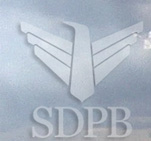

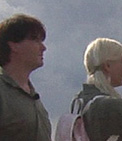
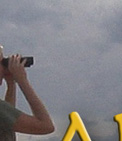

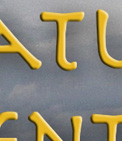


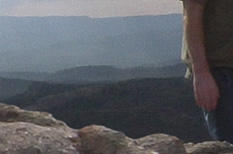

Master Glossary List
Abscission- The shedding of a body part, such as the dropping of leaves, flowers or fruits at the base of a tree branch. A plant will abscise a part either to discard a member that is no longer necessary, such as a leaf during autumn, or a flower following fertilization, or for the purposes of reproduction. Most deciduous plants drop their leaves by abscission before winter, while evergreen plants continuously abscise their leaves. If a leaf is damaged a plant may also abscise it to conserve water. Abscission also refers to the shedding of a claw by an animal.
Acre- A measure of area, usually land. Farmland is measured in acres. One acre is about the size of a football field.
Algae- Simple organisms, usually found in water, that provide the food base for most aquatic animals. Algae is photosynthetic and produces oxygen, yet is not actually a plant.
Amber- A hard translucent yellow, orange, or brownish-yellow fossil resin.
Amphibian- Cold-blooded animals that metamorphose from a juvenile, water-breathing form to an adult, air-breathing form. Typically, amphibians have four limbs and lay their eggs in water. Some examples of amphibians are frogs, toads, salamanders, and newts.
Annual Growth Rings- The layer that forms on an animal's antlers or horns due to their growth during a year. Counting the annual growth rings is a way to tell how old an animal is.
Apoptosis- The programmed cell death of a body part that is a part of a metamorphic change.
Aquatic- Plants and animals that live in water environments such as oceans, estuaries, lakes, rivers, streams, wetlands, and ponds.
Atmosphere- The air surrounding the earth.
Basking- Absorbing heat from the sun in order to maintain a warm body temperature. For example, a snake will bask on a rock on a sunny day.
Biosphere-The place on Earth's surface and its atmosphere in which living organisms exist or that is capable of supporting life. The global ecological system that includes all living things is the biosphere.
Bird of Prey- a carnivorous bird (as a hawk, falcon, or vulture) that feeds wholly or chiefly on meat taken by hunting or from the flesh of a dead animal. Examples of birds of prey are eagles, hawks, owls, and falcons.
Butte- A steep-sided hill, often with a flat top and standing alone in an otherwise flat area. The word "butte" comes from a French word for "small hill". Buttes are formed by erosion.
Camouflage- A method of coloration that allows an otherwise visible organism to remain indiscernible from the surrounding environment. The simplest way is for an animal to be of a color similar to its surroundings. Camouflage is used for protection from predators.
Captivity- Keeping an animal out of the wild and in a confined space, such as a zoo.
Carnivore- Any animal with a diet consisting mainly of meat, whether it comes from animals living or dead.
Cash crop- A crop which is grown for money. For example, corn is a cash crop.
Chlorophyll- The green pigment (color) found in plants. Chlorophyll absorbs light producing the green colour in chlorophyll-containing tissues like plant leaves. Chlorophyll is needed for the process of photosynthesis, which allows plants to obtain energy from light.
Cicada- An insect that does not bite or sting, but does make a distinctive noise. Cicadas have prominent eyes set wide apart on the sides of the head, short antennae protruding between or in front of the eyes, and membranous front wings. Male cicadas have loud noisemakers called "timbals" on the sides of the abdominal base. Contracting the internal timbal muscles produces a clicking sound as the timbals buckle inwards. As these muscles relax, the timbals return to their original position producing another click. Doing this rapidly, the male cicade produces a distinctive sound.
Climate- The general weather conditions of a region, such as temperature, air pressure, humidity, precipitation, sunshine, cloudiness, and winds throughout the year and averaged over many years.
Cold-blooded- Animals that maintain their body temperatures in ways different from mammals and birds. Their body's temperature comes from outside of them. Examples are snakes sunning themselves on a rock, fish changing the depth of the water they are in, and desert animals that bury themselves in the sand to get out of the hot sun.
Collar- A band placed on an animal to tracking its migration. In its simplest form it contains a radio beacon, and more sophisticated devices may contain a GPS tracking unit to record the animal's movements.
Coniferous- A tree that is cone-bearing and stays green all year. Example: Black Hills Spruce trees.
Conservation- The saving of natural resources by using them carefully. Its primary focus is upon maintaining the health of the natural world.
Constrict- To squeeze or compress something.
Crepuscular- Animals which are primarily active at dawn and at dusk. Crepuscular animals may also be active on a bright moonlit night. Examples are deer, rabbits, skunks, and moths.
Cryptodira- The types of turtles that lower their neck and pull thire head straight back into their shell, instead of folding their neck sideways along the body under their shell's margin. A tortoise is an example of aCryptodira.
Debris- The scattered remains of something broken or destroyed; rubble or wreckage.
Deciduous- Trees or shrubs that lose and re-grow all of their leaves seasonally. In some cases leaf loss coincides with winter, while in other areas of the world plants lose their leaves during the dry season of little or no rainfall.
Den- An undergroud or enclosed home that wild animals make for themselves.
Diurnal-An animal that is active during the daytime and rests during the night. Many animal species are diurnal, including many mammals, insects and birds.
Domestic, Domesticated- An animal that is easily managed or handled by humans for food, commodities (such as wool), work, or enjoyment as pets. Examples of domesticated animals are dogs, cats, horses, sheep, and cows.
Dormancy- A period in an organism's life cycle when growth, development, and (in animals) physical activity is temporarily suspended in order to save energy. A tree, for example, goes dormant to prepare for its survival of the winter. The most famous type of dormancy is hibernation
Drought- A long period of abnormally low rainfall, especially one that adversely affects growing or living conditions.
Ecosystem- The living and nonliving things in an environment.
Embalming- Preserving a dead plant or animal to prevent rapid decay.
Endangered Species- An animal species that has such a low number of members that it is in danger of extinction. Some examples of endangered animals are the Blue Whale, the Snow Leopard, and the Tiger.
Environment- The living and nonliving things that occur naturally and are in an area where people, plants, or animals live.
Erosion- Changes in landscape due to the wearing or washing away of its soil by wind, ice, or water.
Evergreens- A plant that has leaves all year round. Examples of evergreens are spruce, juniper, and pine trees, holly bushes, and rainforest trees.
Evolution- The scientific history of the beginning and changes of all life on Earth.
Excavation- To remove dirt to reveal a buried object or archeological remains, such as a fossil.
External ear- The portion of the ear that is visible on the outside of the head. The function of the external ear is to collect sound waves and funnel them into the inner ear for processing by the brain. Some animals, such as snakes, do not have an external ear.
Extinct- A species that has died out completely. Some examples of species which no longer exist are the Dodo Bird and the Passenger Pigeon.
Fahrenheit- The temperature scale in which the freezing point of water is 32 degrees Fahrenheit (°F) and the boiling point 212 °F.
Fertilizer- The nutrients applied to a soil to get better plant growth.
Forage- To search for food.
Forestry- The study of trees and forest environments in order to preserve them and keep them healthy. Modern forestry generally concerns itself with: assisting forests to provide timber as raw material for wood products; wildlife habitat; natural water quality management; recreation; landscape and community protection; employment; landscaping; biodiversity management; watershed management; and erosion control.
Formation- To particular shape of an object.
Fossil- Something that has lasted from a living thing that died long ago.
Habitat- The physical conditions that surround a species. It is the natural environment in which an organism lives. Habitat destruction is a major factor in causing a species population to decrease, eventually leading to its being endangered, or even to its extinction.
Herbivore- An animal that is adapted to eat plants and no meat. An example of an herbivore is the Mountain Goat.
Herpetologist- A person who is an expert on reptiles and amphibians. There are many careers in the field of herpetology. These include field research, public and private breeding, zoological staff or curating, museum staff or curating and college teaching.
Hibernation- A state of inactivity and very low energy usage in animals, characterized by lower body temperature, slower breathing, and lower metabolic rate. Hibernation conserves energy, especially during winter. Before entering hibernation most species eat a large amount of food and store energy in fat deposits in order to survive the winter. During hibernation, animals drastically lower their metabolism so as to tap energy reserves stored as body fat at a slower rate. Animals that hibernate include bats, chipmonks, some species of ground squirrels and other rodents, hedgehogs and marsupials. Even some rattlesnakes are known to hibernate in caves every winter.
Hypothalamus- The part of a brain, just above the brain stem, that links the nervous system to the endocrine system. All mammals have a hypothalamus in their brain. It controls body temperature, thirst, hormones, and fatigue.
Igneous- A rock that was once melted rock but has cooled and hardened.
Incubate- The process by which birds hatch their eggs, and to the development of the embryo within the egg. The most vital factor of incubation is the constant temperature required for the embryo's development over a specific period.
Instinct- Unlearned behaviors that favor survival of an animal. For example, a bird knows how to build a nest.
Insulate- Protection against the loss of body heat.
Invasive- Plants or animals that adversely affect the habitats they invade environmentally or ecologically. A weed is an example of an invasive plant.
Keystone Species- Such species affect many other organisms in an ecosystem and help to determine the types and numbers of various others species in a community. An ecosystem may experience a dramatic shift if a keystone species is removed, even though that species was a small part of the ecosystem by measures of population or productivity.
Larva (larvae)- A juvenile form of an animal which will need to undergo a metamorphosis to become the adult form of the animal. The larva can look completely different from the adult form. Some animals that start out as larva are butterflies (caterpillar), moths (caterpillar), frogs (tadpole), grasshoppers (nymph), dragonflies (naiad), beetles (grub), bees (grub), wasps (grub), flies (maggot), mosquitos (wriggler), and fish (larva).
Lava- Molten, or melted, rock that comes from under the Earth's crust. A volcano expels lava when it explodes. When lava solidifies it forms igneous rock.
Mammal- A class of vertebrate animals characterized by the presence of hair, milk production, lungs, a four-chambered heart, and sweat glands. Most mammals give birth to live young rather than lay eggs.There are approximately 5,400 species of mammals, including humans.
Metabolism- The set of chemical reactions that occur in living things in order to maintain life. These processes allow organisms to grow and reproduce, maintain their structures, and respond to their environments. For example, food is digested by the body so that the nutrients can be used to maintain life.
Metamorphic- A rock that has been changed by heat and pressure. It may have been a sedimentary or an igneous rock first, and then the heat and pressure change it to a new type of rock.
Metamorphosis- The process by which an animal transforms their body into a very different form. For example, a caterpillar will transform into a butterfly.
Meteorite- A natural object originating in outer space that survives an impact with the Earth's surface.
Micro-organisms- Organisms that are so small they can only be seen with a microscope; many have only one cell.
Migrate, Migratory- Seasonal travel to live in a milder climate. Many birds will fly south in the winter and north in the summer to avoid the extreme temperatures.
Molting- The manner in which an animal routinely casts off a part of its body either at specific times of year, or at specific points in its life-cycle. Molting can be the removal of feathers, skin, fur, or even the entire exoskeleton. A snake, for example, will molt an outer layer of skin as it grows larger.
Mulch- A protective cover placed over the soil to modify the effects of climate. For example, mulch is used to save water in the soil, to prevent weed growth, to keep soil warm, to prevent soil erosion, and to repel insects.
Native Vegetation- Plants that have always been in an area because they grow well in that climate, soil, and environment.
Nestlings- Young animals that still spend the majority of their time in a nest.
Nitrogen- A nutrient that is needed for the growth of all living things.
Nocturnal- An animal that does most of their sleeping during the day and is most active at night. Nocturnal animals generally have highly developed senses of hearing and smell, and specially adapted eyesight.
Non-renewable resource- A resource that we get from fossil fuels, such as gasoline, coal, natural gas, diesel, or oil, that cannot be replaced.
Nuclear energy- Energy released by the splitting or merging together of the nuclei of atoms. Uranium is a necessary ingredient in the process.
Nutrient- An ingredient in the soil that plants use as food for growth.
Omnivore- Species that eat both plants and animals as their primary food source.
Organisms- A living thing that has the properties of life; it is capable of growth, reproduction, and maintenance of life. An organism can be unicellular or made up of many billions of cells.
Ozone- A gas in the atmosphere that helps to protect the Earth from the dangerous rays of the sun.
Paleontologist- A person who studies prehistoric life using fossils and rock layers. Paleontologist seek information about several aspects of past organisms such as their identity and origin, their environment and evolution, and what they can tell us about the Earth's organic and inorganic past.
Pesticides- substance or mixture of substances used to kill a pest, such as weeds or insects. Pesticides can be chemical, biological, or disinfectant agents. Although there are benefits to the use of pesticides, there are also drawbacks, such as potential toxicity to humans and other animals.
Petrology- The study of the microscopic details of rocks and the conditions in which rocks form.
Photosynthesis- The way that living organisms, such as a plants, convert light energy into chemical energy. This process is one of the most important biochemical processes, since nearly all life on Earth either directly or indirectly depends on it as a source of energy.
Pigment- Any material resulting in the color of plant or animal cells. For example, skin and hair contain pigment to give them their color.
Plateau- A flat-topped hill, also called a "table land".
Pods- A seed case on a flowering plant.
Pollination- The process that transfers pollen grains from one flowering plant to another. Sometimes this occurs by the plants being close to each other, and other times another agents, such as bees, carry the pollen from plant to plant.
Porous- A substance which water is able to flow through.
Poult- A baby turkey.
Predator- An animal which kills and eats another organism, known as their prey. Predators may hunt actively for prey, or sit and wait for prey to approach within striking distance.
Prehistoric- The period of time on Earth before written history. Dinosaurs are considered to be prehistoric animals.
Preservation- The protection of an area.
Pressure- The amount of force, such as weight, placed upon a substance. Metamorphic rocks are formed under pressure.
Prey- A biological interaction where a predator feeds on another living organism as food for survival. The animal that is hunted and eaten is known as "prey." For example, a mouse would be the prey of a hawk.
Protected Species- Extinction-threatened species which have laws offering protection in order to help build their population numbers. Some protections are to forbid the hunting of a protected animal, restricting land development, or creating preserves.
Rafter- A group of turkeys.
Ranidae- The frog class of the amphibian kingdom. A bullfrog is an example of a ranidae species.
Raptor- A small to medium sized bird that hunts its prey. Owls, eagles, hawks, and falcons are raptors.
Reclamation- The cleaning of wastewater so that it can be returned to the environment safely to add to the natural systems from which water comes.
Recycling- To reuse a material to make something new in order to prevent the waste of potentially useful materials, to reduce using fresh raw materials, and to reduce energy usage.
Reintroduction- The deliberate release of species into the wild, from captivity or relocated from other areas where the species survives. It usually involves species that are endangered. Biologists must also study the animals after the reintroduction to learn whether the animals are surviving and breeding, what effects the reintroduction has on the ecosystem, and how to improve the process.
Renewable resource- Resources that can be replaced in a human lifetime. Some renewable resources are water, wind, sunlight, and biofuels such as ethanol.
Reproduction- The biological process by which new individual organisms are produced. Reproduction is a fundamental feature of all known life; each individual organism exists as the result of reproduction.
Reptile- Members of the animal class "Reptilia" are air-breathing, cold-blooded vertebrates that have skin covered in scales. The majority of reptiles are egg-laying, although certain reptiles are capable of giving live birth. Examples of reptiles include crocodiles, alligators, lizards, snakes, and turtles.
Resin- The thick and sticky hydrocarbon secretion of many plants, especially coniferous trees. Fossilized resin becomes amber.
Resource-A material that is found in nature and that is used by living things.
Rock-A material made up of one or more minerals. Rocks can be classified as Igneous, metamorphic, or sedimentary.
Rodent- A mammal of the order "Rodentia", such as mice, rats, squirrels, or beavers. Rodents are characterized by large incisors (teeth) adapted for gnawing or nibbling.
Rutting- Male deer, elk, moose, and sheep rubbing their antlers or horns on trees or shrubs.
Sediment- Any particulate matter that can be transported by water and which eventually is deposited in layers on the bottom of a body of water.
Sedimentary-A rock formed from material that has settled into layers and been squeezed until it hardens into rock. Examples of sedimentary rocks are limestone, sandstone, shale, and chalk.
Shale- A sedimentary rock formed from layers of clay hardening together.
Speleology- The scientific study of caves.
Spelunking- The recreational sport of exploring caves.
Stalactites- A mineral formation that hangs from the ceiling or wall in limestone caves. It is sometimes called a dripstone. Every stalactite begins with a single mineral-laden drop of water. When the drop falls, it leaves behind the thinnest ring of calcite. Each subsequent drop that forms and falls deposits another calcite ring. Eventually, these rings form a very narrow, hollow tube commonly known as a "soda straw" stalactite. Soda straws can grow quite long, but are very fragile. If they become plugged by debris, water begins flowing over the outside, depositing more calcite and creating the more familiar cone-shaped stalactite.
Stalagmites- The same water drops that fall from the tip of a stalactite on the ceiling of a limestone cave will deposit more calcite on the floor below, eventually resulting in a rounded or cone-shaped fomation that will rise from the floor. This floor formation is called a stalagmite.
Stamen- The center part of a flowering plant which holds the pollen that is ready to be moved to another flower in the pollination process.
Stigma- The surface, usually at the top of the stalk-like pistil, where pollen is placed during the pollination process of a flower.
Talon- The sharp claw of an animal, especially a bird of prey such as the eagle, hawk, or falcon.
Theories- Scientific opinions which have been tested by experimentation.
Thermo-sensitivity- The ability to sense another creature due to its body temperature.
Thorax- One of the three main divisions of an animal's body. The thorax lies between the head and the abdomen section of an animal. An insect's wings and legs are attached to the thorax section.
Threatened Species- Any species that is vulnerable to extinction in the near future. Threatened species is generally used to refer to the three categories of risk: critically endangered, endangered and vulnerable.
Toxic- Acting as a poison. Something which is poisonous.
Tymbols- The structure on the underside of a male cicada's body that produces a loud vibration sound. This sound is how the male cicada attracts a female cicada. Female cicadas do not have tymbols.
Valley- A depression in the land that extends lengthways. A very deep river valley may be called a gorge or a canyon. Most valleys are either U shaped or V shaped.
Vegetation- The plant life of a region.
Venomous- An animal that has glands to secrete venom when they bite, sting or wound their prey. Example: Rattlesnake.
Wallow- to roll about in a lazy, relaxed, or ungainly manner. For example, a buffalo will wallow in the dirt.
Wetlands- Land that is often covered in water, creating a habitat for may animals. Swamps, bogs, or marshes are wetlands.
Wingspan- The distance on a bird's body from the left wingtip to the right wingtip.